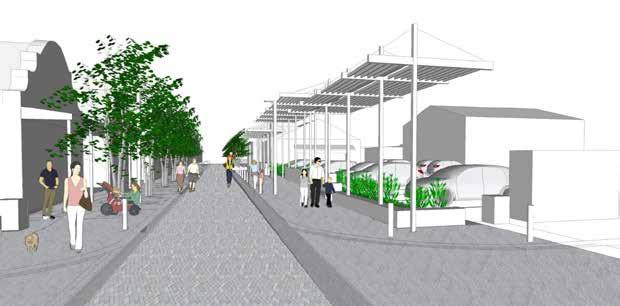10 February 2021
19
www.thevillagenews.co.za
A deep dive into the Dolphins of the Cape Coast – Part 2 By Jax Bath
T
his week’s ocean story is a continuation of last week’s deep dive into the dolphins of the Cape Coast. Dolphins are among the most famous of ocean creatures and perhaps the most adored. We’re very lucky to have several different species frequent our shores, each with their own adaptions to living in our oceans. In the last piece, we took a look at 3 of the 6 dolphin species commonly found along the Cape Coast. The Common Dolphin was the first species covered, with their golden markings and transient nature. We then moved on to the largest of the dolphins, the Orca, before finishing off with South Africa’s rarest coastal cetacean, the Indian Ocean Humpback Dolphin.
sight of this species travelling along the beach or rocky coastline. On the whale watching vessels in the area, we often spot social pods of Dolphins travelling together, although we do get the occasional loner moving through the area too. They’re a delight to watch, often enjoying surfing the swells or working together to heard schooling fish moving through the bay. They get the name “Bottlenose” from their short, stubby rostrum or snout, though I’m not really sure a bottle is the first thing that comes to mind when getting a glimpse of their ever-smiling faces. They are grey in color, though this varies considerably between animals.
They also tend to stay out of deeper waters, preferring water less than 100m deep. At times, these dolphins are shy, but if you’re lucky, you may find them showing off their acrobatics by leaping out the water. They will also occasionally spend some time bow riding with boats. In South Africa, they tend to stay close to shore in the mornings and head out a little deeper to feed in the afternoons and evenings. The Dusky Dolphin
Bottlenose Dolphins grow to between 2.5-4m in length and are often seen interacting with other marine mammals including whales, seals and other dolphin species. The Heaviside dolphin
This week, we will take a look at the remaining 3 species, all of which may be sighted in the Western Cape. Of the 3 species, only the Bottlenose Dolphin is a common sight in the Overstrand, so we’ll begin our deep dive with our famous, friendly neighbors. Last but not least, we have the Dusky Dolphins. Although they have been spotted in Walker bay a handful of times, they’re more common in cooler waters close to Cape Town. One can see anything from a small group of these stream lined voyagers to a super pod speeding about in search of a meal.
The Bottlenose dolphin
The Heaviside Dolphin is the smallest species of dolphin found along our coastline. It is endemic to the Benguela current ecosystem, found only in South Africa, Namibia and Southern Angola. These dolphins are very distinctive, with shades of grey, white and black covering their bodies and weigh up to only 75kg.
As I mentioned last week, the Bottlenose Dolphin is a household name, in part because of their portrayal in film, but also due to the variety of weird and wonderful behaviors they exhibit in nature. There are two recognized species of Bottlenose Dolphins in the world and common Bottlenose Dolphins can be found both on the coast and offshore in the open ocean. Bottlenose Dolphin are frequently spotted of the South African coastline and both Hermanus and Gansbaai are treated to the
Typically seen in small groups starting from Hout Bay and moving towards the west, these dolphins are hard to confuse with any other species sighted off the Cape Coast. To the untrained eye, they may look like a porpoise or even a mini orca, but these dolphins are not closely related. Falling into the family “Cephalorhynchus” with 3 other smaller “blunt nosed” dolphin species, all found in temperate waters in the Southern hemisphere. One of the best ways to watch these cute little fellows is to head out on a sea kayaking excursion from Hout Bay or Sea point. They enjoy feeding on foods such as cephalopods and Hake and are generally have a small range of less than 100km.
Their beaks are short and dark in colour and the rest of their bodies beautiful with stark contrasting colours. These dolphins have white bellies, a blue-black dorsal surface and a gray blaze running through the mid-line. They are smaller and more monochrome in color than the Common Dolphins which is the only species one might confuse them with from a distance. Reaching a size of around 1.8m in length, they are dynamite in a small package. Famed for their aerial displays, back flips and summersaults are common place in sightings of these exquisite creatures. Dusky Dolphins are found in the Southern Hemisphere and like Heaviside Dolphins, seem to prefer cooler waters where upwelling is abundant. Like the other dolphin species along our coast, schooling fish and squid form a major part of their diet and to watch these acrobats, I recommend a boat-based whale watching tour out of the Hout Bay area. With the opening of the beaches in recent weeks, next week’s ocean story will have us in the waters of Walker Bay, discovering all things wild and beautiful that lurk below.























